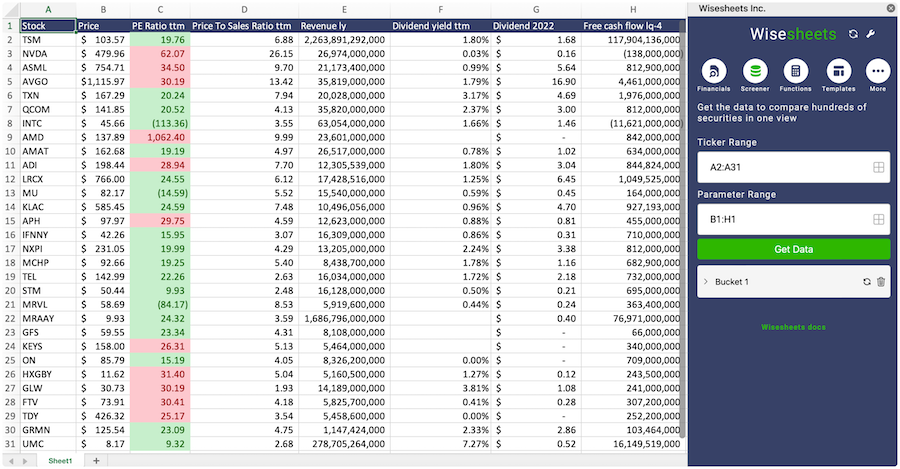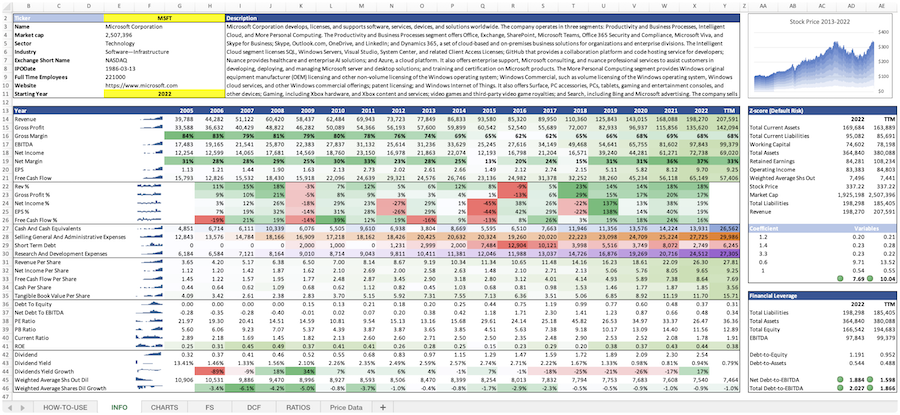Wells Fargo & Company PFD DIV EQUALIZ
WFCNP
Price:
$2
Market Cap:
$297.50B
Wells Fargo is one of the largest banks in the United States, with approximately $1.9 trillion in balance sheet assets. The company has four primary segments: consumer banking, commercial banking, corporate and investment banking, and wealth and investment management. It is almost entirely focused on the U.S.
Industry
Banks - Diversified
IPO Date
2009-09-01
Stock Exchange
OTC
Ticker
WFCNP
PE Ratio
[0.50]
ROE
[11.66%]
Current Ratio
[0.29]
Dividend Yield
[1.86%]
Enterprise Value
[531.60B]
Dividend History
The PE Ratio as of December 2025 (TTM) for Wells Fargo & Company PFD DIV EQUALIZ (WFCNP) is 0.50
According to Wells Fargo & Company PFD DIV EQUALIZ’s latest financial reports and current stock price. The company's current PE Ratio is 0.50. This represents a change of -95.76% compared to the average of 11.80 of the last 4 quarters.
Wells Fargo & Company PFD DIV EQUALIZ (WFCNP) Historical PE Ratio (quarterly & annually)
How has WFCNP PE Ratio performed in the past?
The mean historical PE Ratio of Wells Fargo & Company PFD DIV EQUALIZ over the last ten years is 13.92. The current 0.50 PE Ratio has changed 259.15% with respect to the historical average. Over the past ten years (40 quarters), WFCNP's PE Ratio was at its highest in in the March 2020 quarter at 45.10. The PE Ratio was at its lowest in in the June 2020 quarter at -6.83.
Average
13.92
Median
12.09
Minimum
8.81
Maximum
36.80
Wells Fargo & Company PFD DIV EQUALIZ (WFCNP) PE Ratio by Quarter and Year
Discovering the peaks and valleys of Wells Fargo & Company PFD DIV EQUALIZ PE Ratio, unveiling quarterly and yearly fluctuations to gain insights into the company’s financial performance and market dynamics, offering valuable data for investors and analysts alike.
Maximum Annual Increase = 206.99%
Maximum Annual PE Ratio = 36.80
Minimum Annual Increase = -76.05%
Minimum Annual PE Ratio = 8.81
| Year | PE Ratio | Change |
|---|---|---|
| 2024 | 12.20 | 28.66% |
| 2023 | 9.48 | -17.44% |
| 2022 | 11.49 | 30.32% |
| 2021 | 8.81 | -76.05% |
| 2020 | 36.80 | 206.99% |
| 2019 | 11.99 | 21.38% |
| 2018 | 9.88 | -27.76% |
| 2017 | 13.67 | 7.71% |
| 2016 | 12.69 | 4.07% |
| 2015 | 12.20 | -2.05% |
Wells Fargo & Company PFD DIV EQUALIZ (WFCNP) Average PE Ratio
How has WFCNP PE Ratio performed in the past?
The current PE Ratio of Wells Fargo & Company PFD DIV EQUALIZ (WFCNP) is less than than its 3-year, less than than its 5-year, and less than than its 10-year historical averages
3-year avg
11.06
5-year avg
15.76
10-year avg
13.92
Wells Fargo & Company PFD DIV EQUALIZ (WFCNP) PE Ratio vs. Peers
How is WFCNP’s PE Ratio compared to its peers?
Wells Fargo & Company PFD DIV EQUALIZ’s PE Ratio is less than Farmers & Merchants Bank of Long Beach (18.95), less than Patrizia Se (22.20), greater than Close Brothers Group plc (-7.83), less than NB Private Equity Partners Limited (2.87), less than First National Bank Alaska (12.06), less than SpareBank 1 Nord-Norge (4.90), less than Protector Forsikring ASA (18.58), less than Laurentian Bank of Canada (12.74), less than W.T.B. Financial Corporation (10.13), less than Centuria Capital Group (26.10),
| Company | PE Ratio | Market cap |
|---|---|---|
| 18.95 | $1.00B | |
| 22.20 | $976.97M | |
| -7.83 | $830.90M | |
| 2.87 | $958.31M | |
| 12.06 | $934.23M | |
| 4.90 | $1.38B | |
| 18.58 | $4.17B | |
| 12.74 | $1.28B | |
| 10.13 | $867.33M | |
| 26.10 | $996.06M |
Build a custom stock screener for Wells Fargo & Company PFD DIV EQUALIZ (WFCNP) and other stocks
One of the best ways to find valuable stocks to invest in is to build a custom made screener in your Excel or Google Sheets spreadsheet. This allows you to compare thousands of companies like Wells Fargo & Company PFD DIV EQUALIZ using the financials and key metrics that matter to you in a single view.
The easiest way to set this up is to use the Wisesheets add-on and set your spreadsheet like this:
Covering all these metrics from financial, data, dividend data, key metrics and more you can get all the data you want for over 50+ exchanges worldwide.
Get your free trial here.
Wells Fargo & Company PFD DIV EQUALIZ (WFCNP) and other stocks custom spreadsheet templates
The easiest way to analyze a company like Wells Fargo & Company PFD DIV EQUALIZ or any others is to create a spreadsheet model that automatically retrieves all of the stock data you need.
Using Wisesheets you can set up a spreadsheet model like this with simple spreadsheet formulas. If you change the ticker you can get all of the data automatically updated for you.
Whether you need live data, historical price data, financials, dividend data, key metrics, analyst estimates, or anything else...Wisesheets has you covered.
Frequently asked questions❓
What is the PE Ratio?
How can you use the PE Ratio?
What is Wells Fargo & Company PFD DIV EQUALIZ's PE Ratio?
How is the PE Ratio calculated for Wells Fargo & Company PFD DIV EQUALIZ (WFCNP)?
What is the highest PE Ratio for Wells Fargo & Company PFD DIV EQUALIZ (WFCNP)?
What is the 3-year average PE Ratio for Wells Fargo & Company PFD DIV EQUALIZ (WFCNP)?
What is the 5-year average PE Ratio for Wells Fargo & Company PFD DIV EQUALIZ (WFCNP)?
How does the current PE Ratio for Wells Fargo & Company PFD DIV EQUALIZ (WFCNP) compare to its historical average?

